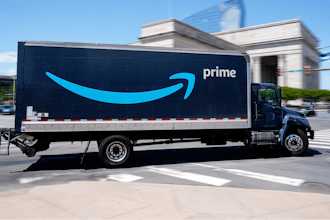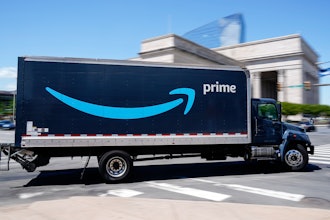Why has it taken the industrial supply chain so long to embrace e-commerce? Fear of change? Politics and/or bureaucracy? Technical challenges? All the above?
I understand these reasons but don’t buy into them. I learned in the Navy It takes one mile for an aircraft carrier to make a 180-degree turn. Smaller ships can do it in half that distance. Large organizations are Aircraft Carrier’s. Smaller companies are speedboats.
For example, at one point in my career I was hired by one of the top five electrical distributors in the world to champion e-business. But cultures clashed among the individual operating companies. Meanwhile Sales feared e-commerce was going to replace them. Actually, it was going to make converting orders easier when converted customers called ready to buy. The project was put on hold.
Speedboats Get There Faster
This was a bit disconcerting, because nine years earlier I was fortunate to be marketing director for a distributor of automation and power distribution equipment where we caught the cusp of e-commerce. I was employee No. 33. Today, 17 years later, the company has thousands of employees in several countries. They’re “crushing it” now with content marketing. Again, one step ahead.
Our fist tests to see if this e-commerce “thing” was going to work involved listing 10 popular industrial equipment SKU’s on a large, well known auction site. These items sold online the same day. So, what’s taken so long for industrial e-business to grow up?
Walking to Kansas
Convinced this was going to work, we converted the IT server room into a small warehouse. We were given three weeks to build and launch a webstore. We launched on time. By today’s standards, the site’s appearance was poor. But we did one thing few others in the supply chain had done: We just started.
We took online inquiries and finalized the sale with a phone conversation. This built relationships. In the interim, our shopping cart was hosted by a third party for a growing number of online orders from repeat customers.
No matter where you live, walking to Kansas begins and ends the same way: one step at time. So, it has puzzled me for years why, if Dorothy knew this, why didn’t more suppliers start their journey years ago? First in usually wins. Just Start.
When Clicks Were a “Nickel”
Cultures that encourage “intrapreneurs” in all departments to solve problems generate excitement and momentum. Within 18 months we scaled the store to 65,000 SKU’s. At that time PPC bidding on Google for the nation’s largest industrial brands was 10 cents per click (vs. $10 today).
Suppliers much larger than us saw it coming, but seemed unsure their customers were ready to do business this way. Meanwhile, we disrupted supply chain purchasing by leveraging our visibility. Large national distributors now wanted to list products on the site. We brokered commissioned agreements for joint sales visits with end users now familiar with our brand.
Google, Where Are My Beach Towels?
As we grew and got traction, our budget for digital grew. Our PPC spend after a year was such that Google was sending me holiday gifts like oversized beach towels with that colorful “Google” logo that was becoming more familiar. We added SEO to our marketing toolkit to stabilize PPC spend.
The CFO approached me and asked how me how much insurance we should take out on the web site. I responded, “what’s our annual revenue”, alluding to the fact our success relied in large part on our visibility. Insure a website? Hmm.
Google doesn’t send me gifts anymore or call me to see if I need free training. Maybe they’re too busy billing credit cards or just ran out gifts, I’m not sure.
Failure is an Option… Fail A Lot
When a reporter asked Thomas Edison, “How did it feel to fail 1,000 times?” Edison replied, “I didn’t fail 1,000 times. The light bulb was an invented with 1,000 steps.”
Does it make sense to delay the launch, waiting for e-commerce experts integrate the ERP as you lose even more time? Why not build the catalog, design and deploy the site while integrating the ERP and PIM on a test platform? This may be over-simplification, but it’s working somewhere every day. I’ve witnessed it.
Almost daily, I speak with mid-size and large companies who, in December 2017 hadn’t deployed a webstore, and today tell me they are almost “ready to launch”. When?
What the Heck is a Digital Accelerator?
Today we’re seeing amusing titles in digital marketing. Fortune Magazine recently listed some of them. Ones I’ve seen include “Digital Accelerator”, “Digital Evangelist”, E-Commerce Champion and other innocuous terms.
I’m not sure IT would allow me to set foot in the server room if I introduced myself as a “digital accelerator”.
I feel it’s necessary to build bridges with IT folks. This means learning how to manage large relational databases. Understanding not only raw data “touch points” (the ERP and CRM), but where the database tables are stored if you want to slice and enrich product data for your product catalog (PIM). Or, create custom reports beyond the canned ones delivered at deployment.
Depending on your organization’s resources It helps getting comfortable code, so you don’t break the website. And if you do, know how to fix it. Build relationships with traditional IT staffers and gain their respect and trust for collaboration and speedy execution.
Marketing is Spelled Mark-IT-ing
Marketing and IT have converged. This was the central theme of my presentation at the National Association of Electrical Distributors “Adventure Marketing” conference in Chicago. The presentation included:
Leveraging and Branding; Supply Chain Partnering; IT and Marketing Collaboration; Skillset Development; Product Data Enrichment; Content Marketing and Blogging; Social Currency; Analytics; Business Intelligence.
The underlying message was that the marketer’s tool set has expanded. No limits. Our role in e-Commerce transcends IT, Sales, Operations, Shipping and Purchasing. This is E-Business.
Standing in the Shadow of Sales
To be taken seriously as Digital Marketers we need to step outside our comfort zones. IT, Marketing and Sales have converged around “E-Business”. Digital marketers starting a new job can benefit themselves and the organization by spending time shadowing salespeople. Understand the customer, learn the products, know the customer.
There’s plenty of time for tweeting, blogging and wearing a catchy title. And let me know if you’ve seen my trinkets from Google.
Greg Carter has been working exclusively in Industrial/Electrical Digital Marketing and e-commerce for more than 16 years. He is Director of Business Innovation for Electrical Marketing, LLC. Carter can be reached at [email protected] or 856-381-7834.
This blog was originally posted by Electrical Marketing here






















